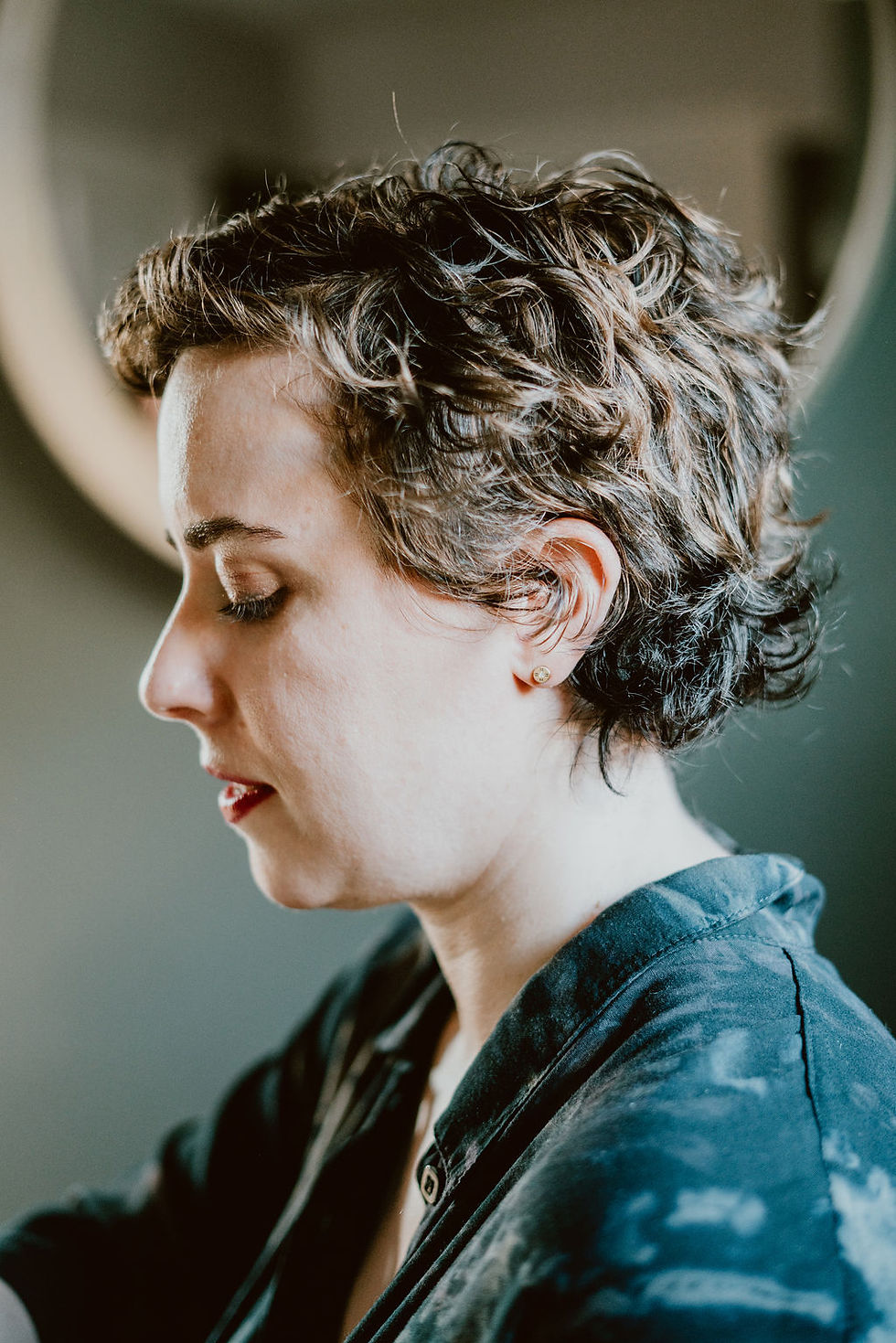What Is Your Skin Type?
- Rebecca Biederman

- Jan 28, 2020
- 4 min read
Updated: Oct 24, 2024

It is common in modern skin diagnostics to think of the skin as having a type. Are you oily? Are you dry? Are you combination? What are you? How do you define this skin of yours?
In this way of thinking, it can often lead to quick conclusions that isolate and address specific symptoms, but don't look systemically at what the skin is trying to say. It will force the skin into a state of submission instead of listening to its messages.
We are in a long term relationship with our own skin. How do we want that relationship to look?
Instead of seeking out our "skin type", it might be more useful to ask, what imbalances am I seeing in my skin? What is the deeper issue? What is my skin trying to tell me?

I like to encourage clients to think of their skin as telling them a story.
You can ask yourself: how much sleep am I getting? How much water am I drinking? How has my digestion felt? Where am I in my cycle? What products am I currently using on my skin, my hair, my teeth? What is my stress level? What are my concerns? Your skin is your body and it is all connective. It is not just the covering on the outside, but often a map to internal imbalances. It can feel scary at first and you can often feel like you need an outside expert to guide you, but it is in these questions that you can begin to tap into your own innate intuition. It also allows for the possibility of change, of evolution. We are not static beings, but dynamic, shifting, fluid. We change with the seasons, with the years, over time, sometimes daily. Curiosity and openness allow us to be in dialog with ourselves and with our needs.
You are your best healer.

Beginning to tune in and listen to our own intuition about our unique bodies can be as simple as the act of choosing a high-quality plant oil and hydrosol and assisting the skin with its own self care strategy. The skin is always trying to find balance and homeostasis. When the skin is stressed, we can learn to meet it where its at, based on the imbalances we are observing and not by boxing it into a specific type. Fundamentally, it is a process that begins with changing our language around skin, how we talk about skin, and how to talk to ourselves about our own faces.
An example that can come up often is the desire to find anti-ageing products. Anti-ageing, as a phrase, a philosophy, and fear-based marketing ploy, goes against nature. In seeking to better understand our bodies and look at ourselves as whole people instead of pieces, parts and symptoms, we begin to realign ourselves with nature to find the greatest balance and happiness. Again, in the way we talk about ageing, language becomes limiting and it is in how we communicate about our skin that we can alter thought patterns.
It is an oppressive viewpoint to fight ageing as if it is a horrible beast out to destroy our beauty and our selves. It might feel better to embrace the natural cycles of life and unhitch this idea of beauty from age and attach it to health and peace. How freeing to believe that who you are is enough. That you are okay. That you are beautiful as you are.
That it's more than okay to age and grow older. That this is, in fact, beautiful. And instead of waging war against ageing, ask questions around your observations: What are you seeking in skincare? What are your concerns? Does your skin feel dull? Are you worried about fine lines? Are you concerned about pigmentation or dry patches? What can address these concerns?

Part of the therapy of plant-based, fresh distilled, active skincare is the pleasure and joy of using these products. You can feel it on your skin! They can make you look forward to your routine, look forward to caring for yourself. They help to tap into your intuition, tap into your radiance, and check in with what feels right.
You can use this time to rest and check in with this other part of yourself, your deeper intuition, your instincts. What smells right? What feels right? What are you drawn to? Your skin probably changes and shifts a bit monthly and seasonally. Is it dehydrated, sensitive, reactive? When you begin giving it water/hydration/hydrosol mixed with an oil serum it helps the oil and water balance the skin's hydro-lipid layer. The water and oil work together so play around with how much oil you need versus water. The key to balancing the skin is building up that protective layer and supporting it. The acid mantle, or protective layer, is what interacts with the environment and protects our skin over time. As you nourish and support the acid mantle with oils and waters, the skin is better able to balance itself and come to homeostasis.
Whole plant skincare generally does not beat the skin into submission, but communicates with and educates the skin so that it can heal itself. Your skin is a story, not a type.
.png)



Comments